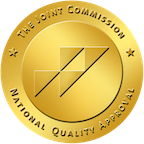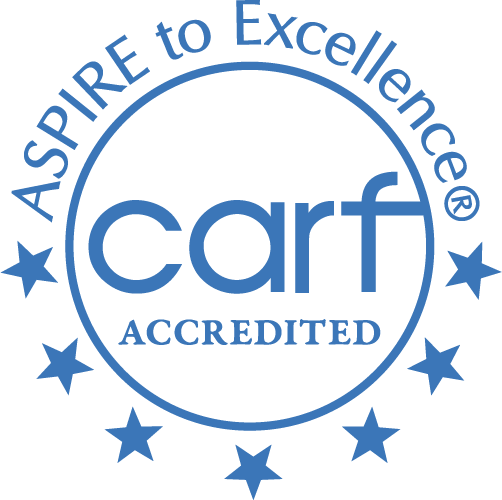Skip To Rehab Listing
Chicago: A Drug Trafficking Thoroughfare
Often called "The Windy City," "Chi-town," or "The City Of Broad Shoulders, " Chicago, Illinois is known by many different monikers. Sadly though, in recent years, it's come to be referred to (more often than not) as "Chi-raq," in reference to its soaring murder rate and an incredibly overstretched police force. In 2020, Chicago saw a 34% rise in the murder rate from the previous year, and shootings were up a shocking 42%. In June of 2020, Chicago saw its highest number of gun violence victims—ever--in a single weekend.
So what could be the reason for this incredible uptick in crime? Drug addiction in The Windy City has certainly been on the rise, but authorities say that the primary reason for Chicago's crime statistics going through the roof can be attributed to its key role as a drug trafficking thoroughfare.
Located in Cook County (where two-thirds of the entire Illinois state population resides), Chicago is a booming, ethnically diverse metropolis. And in addition to being a world-class center of business and commerce, it's also a transportation hub and distribution center for illegal drugs in the Great Lakes Region and the Midwest as a whole. Home to the nation's largest trucking center with over 200 truck terminals, Chicago is also home to one of the world's busiest rail yards, which serves as a primary shipping point for goods going from Mexico to Canada, and east coast to the west coast. Chicago's status as a major financial center also presents a plethora of opportunities for money laundering-. which major drug trafficking operations always require.
Authorities say that street gangs have an absolute stranglehold on street-level illegal drug distribution in Chicago, and they control the disbursement and retail sales of cocaine, heroin, and marijuana throughout the state at large. Authorities consider the violent crime associated with the gang-related drug trafficking to be the most serious threat to the state at present. We can only hope that policing, community outreach efforts, and ever-changing legislation can begin to turn the trend around.
Drug and Alcohol Treatment Service Settings and Approaches
The large number of people who struggle with alcohol and drug addiction in the Chicago area necessitate the presence of a variety of treatment centers, where clients can get the services they need in a convenient setting. These facilities include the following: short term drug and alcohol rehab programs, long term drug and alcohol rehab centers, inpatient detox centers, outpatient substance abuse treatment services, inpatient drug rehab facilities.
These treatment programs facilites render many different approaches to addiction rehabilitation, making it possible for clients to find an approach that gets results for them. Those looking for rehab can find any of the rehabilitation methods available in Chicago including: rational emotive behavioral therapy, vocational rehabilitation services, contingency management/motivational incentive, motivational interviewing, individual psychotherapy, cognitive/behavior therapy.
Special Programs for Substance Abuse Treatment
In order to achieve lasting recovery, people struggling with drug and alcohol abuse occasionally need customized programs designed for their unique circumstances. Chicago, IL. treatment facilities provide many services like these: transgender or (LGBT) clients, domestic violence, clients with HIV/AIDS, persons with post-traumatic stress disorder, clients referred from the court/judicial system, programs for the hearing impaired.
Patients can ask about a center's programs and methods and receive instruction in finding the right treatment for their needs.
Recovery Payment Alternatives
Drug and alcohol rehab programs also customize their financing options to suit the different financial needs of their clients. In general, patients have several payment alternatives for their recovery, such as the following: cash or self-payment, private medical insurance, medicare, medicaid, payment assistance, state education funds, county or local government funds.
Those seeking treatment should not allow money to be an obstacle. Treatment centers can guide them through their payment options and assist them in finding an affordable solution.
Thanks to Chicago's many options for drug and alcohol rehab and financing, individuals seeking assistance can get a suitable, customized, and affordable treatment program.
Commonly Asked Questions about Addiction and Treatment
What is the purpose of drugs such as methadone, suboxone and subutex in the recovery process?
Methadone, Suboxone (a combination of buprenorphine and naloxone), and Subutex (buprenorphine) are medications used in Medication-Assisted Treatment (MAT) for opioid use disorders. Their primary purpose in the recovery process is to help manage withdrawal symptoms and reduce cravings, facilitating a safer, more comfortable transition to abstinence or long-term management of the disorder. Here's a more detailed look at how each of these medications function:
Methadone: Methadone is a long-acting opioid agonist, which means it activates the same receptors in the brain that other opioids like heroin, morphine, or prescription painkillers do. However, it does so more slowly and for a longer duration, without causing the intense euphoria associated with misuse of those drugs. This helps to mitigate withdrawal symptoms and cravings, enabling individuals to function more normally in daily life.
Suboxone: Suboxone contains two active ingredients: buprenorphine and naloxone. Buprenorphine is a partial opioid agonist, meaning it activates the opioid receptors in the brain, but to a lesser extent than full agonists like heroin or methadone. This can help manage cravings and withdrawal symptoms without producing the high associated with opioid misuse. Naloxone is an opioid antagonist, meaning it blocks the effects of opioids. It's included in Suboxone to discourage misuse of the medication; if someone tries to inject Suboxone, the naloxone will trigger withdrawal symptoms.
Subutex: Subutex is the brand name for buprenorphine alone. Like in Suboxone, buprenorphine in Subutex serves to lessen withdrawal symptoms and reduce cravings. It is typically used in the initial stages of treatment, while Suboxone is more commonly used for maintenance.
These medications are typically used as part of a comprehensive treatment plan that also includes counseling and behavioral therapies. It's important to note that while these medications can be highly effective in supporting recovery, they should be used under the guidance of a healthcare provider due to the risk of misuse and potential side effects. Each individual's treatment plan should be tailored to their unique needs and circumstances to ensure the best possible outcomes.
When a person is a substance abuser, don't they realize their life is being destroyed?
Substance Use Disorder, commonly known as addiction, is a complex condition that can significantly impact a person's judgment, perceptions, and decision-making abilities. Here are a few reasons why someone struggling with substance abuse might not fully realize the extent of the damage it's causing to their life:
Denial: It's common for individuals suffering from addiction to be in denial about the extent of their problem. They might underestimate how much or how often they use, or they may not acknowledge the negative consequences that their substance use is causing.
Altered Brain Function: Addiction affects the brain's reward system and impairs cognitive function. This can distort a person's ability to clearly see the harm that their substance use is causing. They may focus intensely on the immediate rewards of drug use while minimizing or ignoring the long-term negative consequences.
Co-occurring Disorders: Many people with Substance Use Disorder also have other mental health disorders, such as depression or anxiety. These conditions can exacerbate feelings of denial or self-deception about the extent of the substance abuse problem.
Fear and Shame: Fear of withdrawal, fear of change, and shame about their substance use can also prevent individuals from admitting to themselves or others the full extent of their problem.
Lack of Awareness: Some individuals may not understand the signs and symptoms of addiction, or they may not recognize that they can seek help and that recovery is possible.
Is substance abuse recovery a life long process?
Substance abuse recovery is often described as a lifelong process. This is due to the chronic nature of addiction, which is a brain disease characterized by compulsive drug seeking and use, despite harmful consequences. Like other chronic illnesses such as diabetes or heart disease, addiction often requires long-term or repeated care to manage symptoms and prevent relapse.
Here are key reasons why recovery is often a lifelong process:
- Changes in Brain Function: Substance use can cause long-lasting changes in the brain that persist even after the substance is no longer used. These changes can lead to cravings or triggers for drug use, which can potentially lead to relapse.
- Behavioral Changes: Substance use often involves habits and behaviors that become deeply ingrained over time. Changing these behaviors and developing new, healthier habits can take time and ongoing effort.
- Coping Mechanisms: Many individuals use substances as a way to cope with stress, trauma, or other underlying issues. Recovery often involves learning new coping mechanisms and addressing these underlying issues, which can be a long-term process.
- Support Systems: Recovery often involves building or rebuilding supportive relationships and social networks, which can take time.
- Maintenance of Physical and Mental Health: Substance use can lead to a variety of physical and mental health issues. Managing these conditions and maintaining overall health can be an ongoing part of recovery.
- Relapse Prevention: Relapse rates for substance use disorders are similar to those of other chronic illnesses. Ongoing care, support, and strategies for managing cravings and triggers can help prevent relapse over the long term.






































